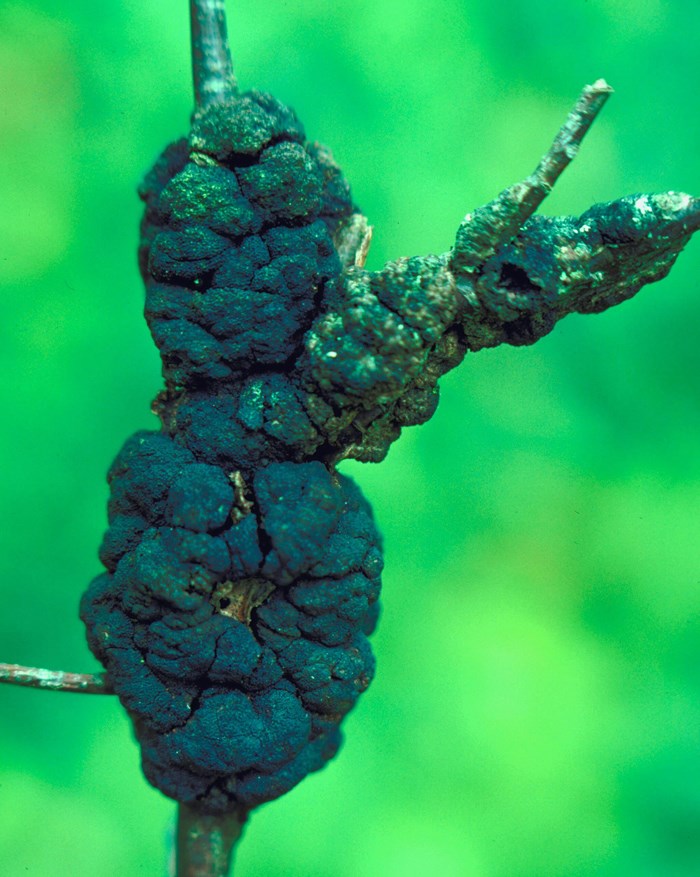Black knot is an ugly, disfiguring disease of some of the tree and shrub species in the plum and cherry genus (Prunus). Most susceptible are our native chokecherry (including purple-leaf selections like Schubert chokecherry) and the European mayday (aka European bird cherry). Also affected are wild plums, and, to a much lesser degree (I’ve never noticed it), Amur, Nanking, Mongolian, pin, sand and sour cherries; apricot; and ornamental flowering plum.
The disease is caused by the fungus Apiosporina morbosa. It usually infects recent thin-barked growth (current or last season) or enters through wounds on older growth. It starts out in the first year as a 2 – 6 inch long, largish swelling or canker with cracked bark along a branch. In subsequent years, the canker develops further into a large, hard black mass (one of it’s common nicknames is sh*t-on-a-stick). Stems may continue to grow to the outside of the canker; but if the canker completely girdles the stem, further growth is limited and the stem eventually dies. The disease spreads by windblown spores produced by the mature black cankers during wet periods in spring, particularly around blooming time.
Eradicating black knot is impossible since we are surrounded by natural stands of highly susceptible and infected wild chokecherry. The only practical treatment is regular monitoring and pruning. In the late fall and winter (i.e. from now to March), when the leaves are off and the cankers are dormant and easy to spot, inspect susceptible trees and shrubs. Remove infected branches, making the cut at least 6 inches below the knot – use good pruning techniques and cut back to a branch junction or to the point where it meets the trunk to avoid leaving stubs. Dip your pruning tools in rubbing alcohol between cuts and after finishing for the day to prevent spreading the disease. Destroy diseased wood by burning or burying it or send it to the landfill – cankers can produce spores for several months after being removed.
It may seem like I’m painting a picture of doom and gloom. But with a bit of care and maintenance, it is quite easy to manage black knot. In my old yard, despite having a neighbour with a wild chokecherry shrub riddled with black knot, I planted two ‘Midnight Schubert’ purple-leafed chokecherry trees. Every November, I would look up into the canopies giving myself a crick in the neck. On occasion, I would spot one or two cankers that I removed promptly. Really: no more than a matter of 20 to 30 minutes of effort. When I moved, I left the new owners with two beautiful, 25-foot tall trees without any unsightly cankers.
Bonus: this is a great time to inspect all your trees for 1-cm long light to dark brown, barrel-shaped tent caterpillar egg masses. They completely encircle young branches, usually 3 – 6 inches from branch tips. To remove, gently scrape them off, taking care not to damage the bark.



